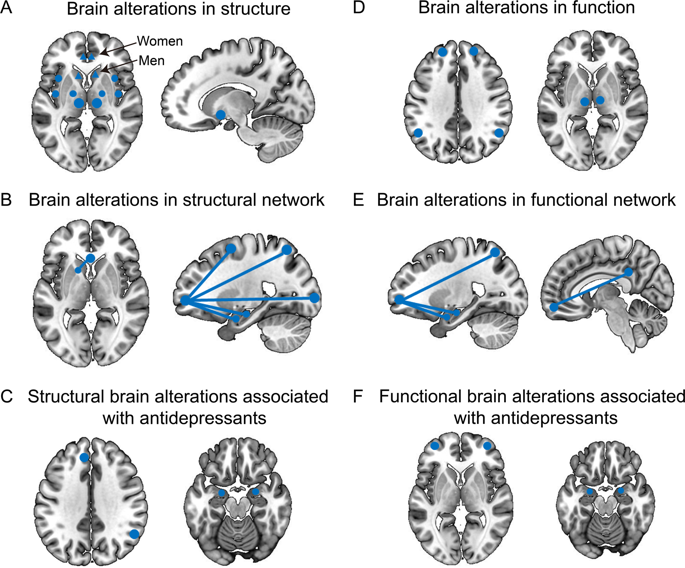当前位置:
X-MOL 学术
›
Transl. Psychiaty
›
论文详情
Our official English website, www.x-mol.net, welcomes your feedback! (Note: you will need to create a separate account there.)
The rise and fall of MRI studies in major depressive disorder.
Translational Psychiatry ( IF 6.8 ) Pub Date : 2019-12-09 , DOI: 10.1038/s41398-019-0680-6 Chuanjun Zhuo 1, 2, 3, 4, 5, 6, 7, 8 , Gongying Li 2 , Xiaodong Lin 3 , Deguo Jiang 3 , Yong Xu 4, 5 , Hongjun Tian 6 , Wenqiang Wang 7 , Xueqin Song 1
Translational Psychiatry ( IF 6.8 ) Pub Date : 2019-12-09 , DOI: 10.1038/s41398-019-0680-6 Chuanjun Zhuo 1, 2, 3, 4, 5, 6, 7, 8 , Gongying Li 2 , Xiaodong Lin 3 , Deguo Jiang 3 , Yong Xu 4, 5 , Hongjun Tian 6 , Wenqiang Wang 7 , Xueqin Song 1
Affiliation

|
Structural and functional brain alterations are common in patients with major depressive disorder (MDD). In this review, we assessed the recent literature (1995-2018) on the structural and functional magnetic resonance imaging (MRI) studies of MDD. Despite the growing number of MRI studies on MDD, reverse inference is not possible as MRI scans cannot be used to aid in the diagnosis or treatment planning of patients with MDD. Hence, researchers must develop "bridges" to overcome the reverse inference fallacy in order to build effective tools for MDD diagnostics. From our findings, we proposed that the "bridges" may be built using multidisciplinary technologies, such as artificial intelligence, multimodality imaging, and nanotheranostics, allowing for the further study of MDD at the biological level. In return, the "bridges" will aid in the development of future diagnostics for MDD and other mental disorders.
中文翻译:

MRI研究在重度抑郁症中的兴衰。
结构性和功能性脑部改变在重度抑郁症(MDD)患者中很常见。在这篇综述中,我们评估了有关MDD的结构和功能磁共振成像(MRI)研究的最新文献(1995-2018)。尽管关于MDD的MRI研究越来越多,但由于MRI扫描不能用于帮助MDD患者的诊断或治疗计划,因此无法进行反向推理。因此,研究人员必须建立“桥梁”以克服反向推理的谬误,以便为MDD诊断建立有效的工具。根据我们的发现,我们建议可以使用多学科技术(例如人工智能,多模态成像和纳米热学)来建造“桥梁”,从而可以在生物学水平上进一步研究MDD。作为回报,“
更新日期:2019-12-11
中文翻译:

MRI研究在重度抑郁症中的兴衰。
结构性和功能性脑部改变在重度抑郁症(MDD)患者中很常见。在这篇综述中,我们评估了有关MDD的结构和功能磁共振成像(MRI)研究的最新文献(1995-2018)。尽管关于MDD的MRI研究越来越多,但由于MRI扫描不能用于帮助MDD患者的诊断或治疗计划,因此无法进行反向推理。因此,研究人员必须建立“桥梁”以克服反向推理的谬误,以便为MDD诊断建立有效的工具。根据我们的发现,我们建议可以使用多学科技术(例如人工智能,多模态成像和纳米热学)来建造“桥梁”,从而可以在生物学水平上进一步研究MDD。作为回报,“



























 京公网安备 11010802027423号
京公网安备 11010802027423号